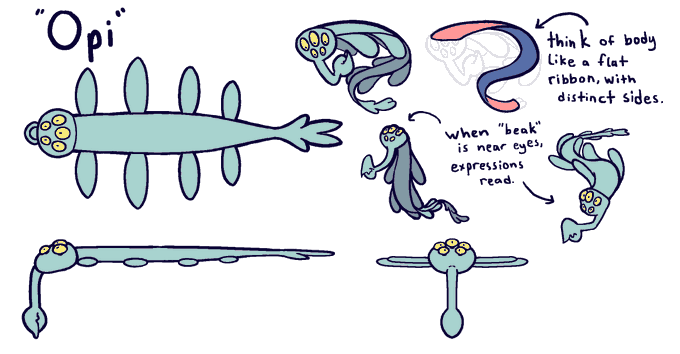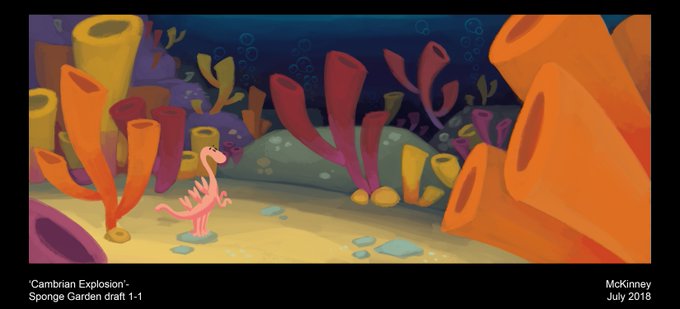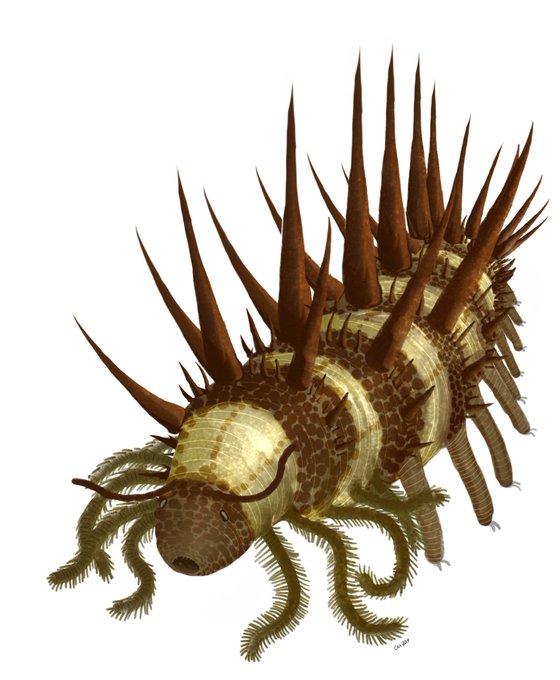anomalocarisのTwitterイラスト検索結果。 193 件中 9ページ目
@eatsmorechicken @TrillinDaGame It's a sea scorpion (Eurypterid). Anomalocaris was a Cambrian beast, closely related to arthropods. (Art Rainer H)
アノマロカリス・カナデンシス 、書籍の立ち絵を透明水彩でカラー化しました!こちらの原画は某企画の景品になります!やったーー!!#Anomalocaris #アノマロカリス解体新書
Happy Valentines Day... I anomalo...care about you. 😳😳😳😳
This design is available as a sticker (or notebook) on my Redbubble page: https://t.co/VLviWbkFNK
#ValentinesDay2020 #ValentinesDay #Cambrian #Anomalocaris
art is hard and stupid heres a sample of doodles i have been drawing and not sharing with anyone ✌️ anomalocaris brain
⑥Anomalocaris canadensis復原画、2014年の新説を基に復元しました。それまでの説より複眼が巨大で、硬組織は捕食用の付属肢と今回追加された頭甲のみ。残りはなんと軟体で出来ているとのこと!色は化石に残らないのでほぼ画家任せになり、かなり悩んだ結果、透明を選択。
#アノマロカリス解体新書
@zodialacour obscurer organisms like anomalocaris and rafflesia and sea butterflies are all well known in japanese culture, probably because biology is a core subject in grade school there, which is why they tend to show up in japanese media, often to the puzzlement of most people
#Anorith & #Armaldo resemble #Anomalocaris, as well as having the eyes and feather-like protrusions of a brine shrimp. Armaldo also shares physical traits with #theropod dinosaurs.
@darianjonesart a whole bunch, but mainly Hallucigenia, Opabinia, Sanctacaris and Anomalocaris! here's some production art as well for a fellow paleo enthusiast
@origamiPete @JoschuaKnuppe Ramskoeldia is one of the largest Amplectobeluids we know of, it could get up to around 50 centimeters long if you include the streamers on the tail. Got kicked out of North America by Anomalocaris magnabasis.
For my first post on this #FossilFriday, the fantastic appendages of Anomalocaris magnabasis! Unlike Anomalocaris canandensis, A. magnabasis had a bunch of thin “spinules” projecting from the front side of each spine, used to help snare soft prey.
#Palaeontology #Paleoart
@LaurieLuckritz @afriendlywhit @kunhm They’re the ancestors of bugs. Modern Lobopods include tardigrades and velvet worms, but their extinct forms include Hallucigenia, Anomalocaris, Opabinia, et cetera. The first image of these four is my reconstruction of Acinocrinus
This new #Cambrian critter is fascinating; related to the predator Anomalocaris and filter-feeder Aegirocassis but living like neither, it seems to be a mud-grubbing sweep-feeder, like some of the eurypterids that evolved later in the Paleozoic. #fossils
https://t.co/0CfL5a7rM6
Drew an Anomalocaris. I think I'm starting to understand how shading and lighting works.




















































